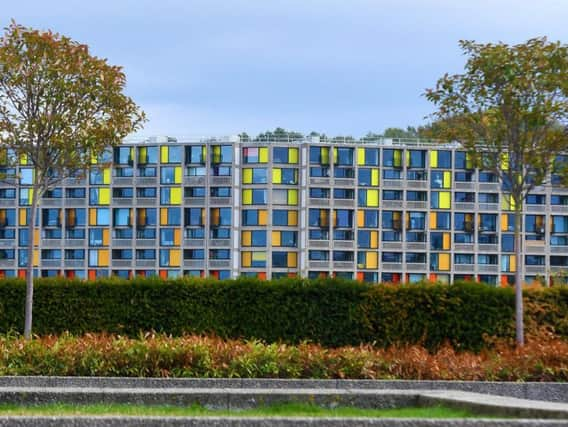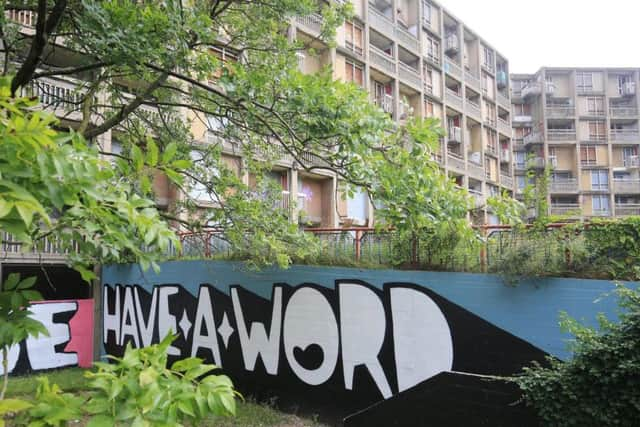Historic England gives £500,000 grant for development of Sheffield landmark Park Hill flats


The colourful 1960s apartment blocks are considered to be among the most iconic architecture in the city and Park Hill is Europe's largest listed structure.
Historic England have given developers Urban Splash the grant to fund repairs to the concrete structure of the buildings.
Advertisement
Hide AdAdvertisement
Hide AdThe company has already created 260 new homes and 10,000ft of commercial workspace as part of the first phase of rejuvenation. The former social housing estate, which is close to the railway station, has since become one of Sheffield's most desirable city centre addresses.


Park Hill's new generation on why they bought flats thereThe second phase, which is due for completion in 2021, will see another 195 flats refurbished and further workspace opened.
Historic England has now contributed a total of £900,000 to the project.
The Park Hill estate was built between 1957 and 1961 as a futuristic and pioneering post-war housing scheme. Many of its first residents came from demolished slums, and 'brutalist' architects Jack Lynn and Ivor Smith wanted to recreate the community feel of the old terraces by designing 'streets in the sky' to encourage social interaction. They were even wide enough for a milk float to pass.
Advertisement
Hide AdAdvertisement
Hide AdPark Hill was lauded as an example of inclusive, progressive social housing but by the 1980s it was in decline and its layout meant it became susceptible to problems with crime and anti-social behaviour.
Urban Splash's involvement has seen the old flats renovated and a more diverse range of buyers, renters and students have moved in.
Historic England's John Paul Walker said:-
“Park Hill is a phoenix rising from the ashes. After years of decline and neglect, this housing estate is once more becoming a symbol of Sheffield’s pride, innovation and ambition.
“Phase One has successfully given Park Hill a new lease of life and restored its reputation. We hope that Phase Two will continue this rejuvenation of one of Sheffield’s most prominent buildings.
Advertisement
Hide AdAdvertisement
Hide Ad“Like all good historic building redevelopments, the Park Hill project retains the spirit and the most important physical characteristics of the original building, while confidently looking to the future.”
See inside this stylish new Park Hill apartmentPark Hill - the history of a Sheffield landmark
The flats were built on cleared land that had once been the site of back-to-back terraces, tenement blocks, quarries and waste ground. These Victorian slums had shared outdoor toilets and standpipes that were used by up to 100 people. In the 1930s, the area had become so notorious for violence that it was nicknamed Little Chicago.
Demolition plans were released before World War Two but were halted when the war broke out. In the 1950s, the scheme was revisited, and it was decided that a radical solution was needed to re-house Park Hill's population.
Advertisement
Hide AdAdvertisement
Hide AdLynn and Smith were commissioned to design buildings inspired by the brutalist architecture that was becoming popular at the time. Old neighbours were given new flats next door to each other and old street names were re-used. Four pubs and 31 shops were provided.
The blocks were initially popular with council tenants, but maintenance issues and poor noise insulation meant demand for them waned and they became more difficult to let.
In 1998, Park Hill was Grade II-listed, which meant it could never be demolished. However, its future vitality by this point was uncertain.
Urban Splash's work was due to start in 2007 and their blueprint was for a mixture of apartments, business units and social housing. Construction was delayed by the recession and began in 2009, opening to residents by 2011.
Advertisement
Hide AdAdvertisement
Hide AdAs part of the renovation, Urban Splash opted to preserve a piece of graffiti which had passed into urban legend - 'Clare Middleton I love you will u marry me'. It was later discovered that the man who wrote it did not marry Clare and that she died of cancer in 2007.
Park Hill has a place in Sheffield's cultural history - it's been referenced by Pulp, used as a filming location for This Is England 90 and appeared in the 11th series of Doctor Who. The Arctic Monkeys have also shot a video there.
A musical about the history of Park Hill and five friends who lived there, Standing At The Sky's Edge, has even been performed at the Crucible Theatre.